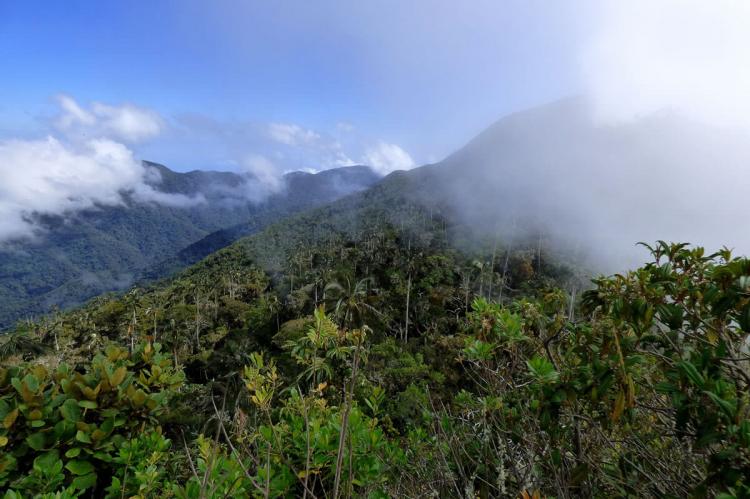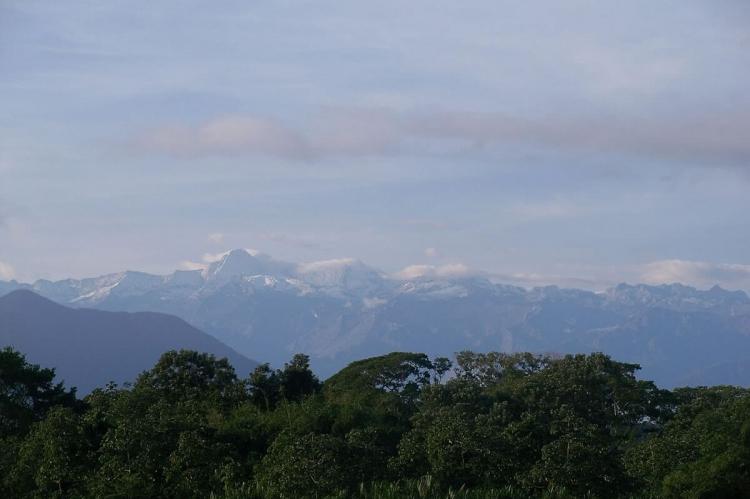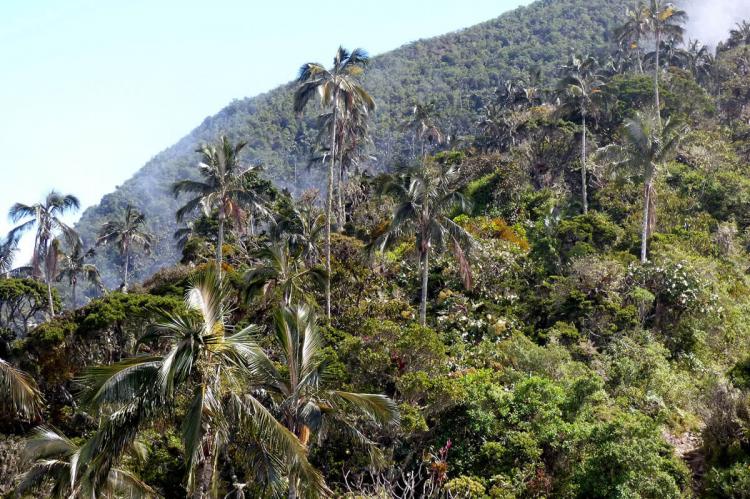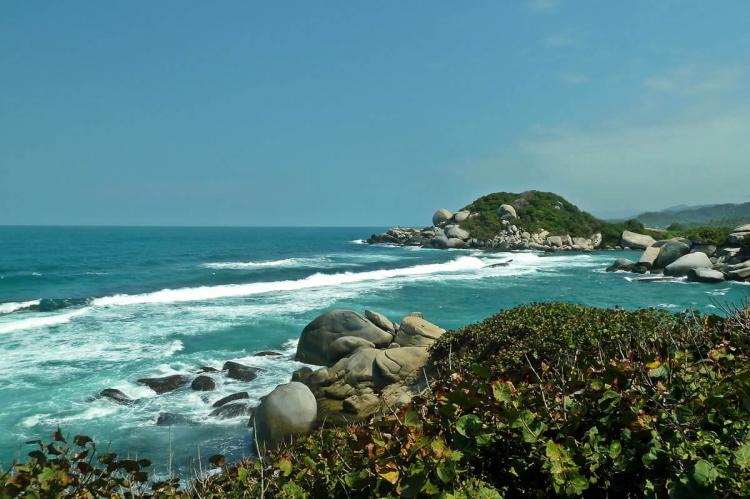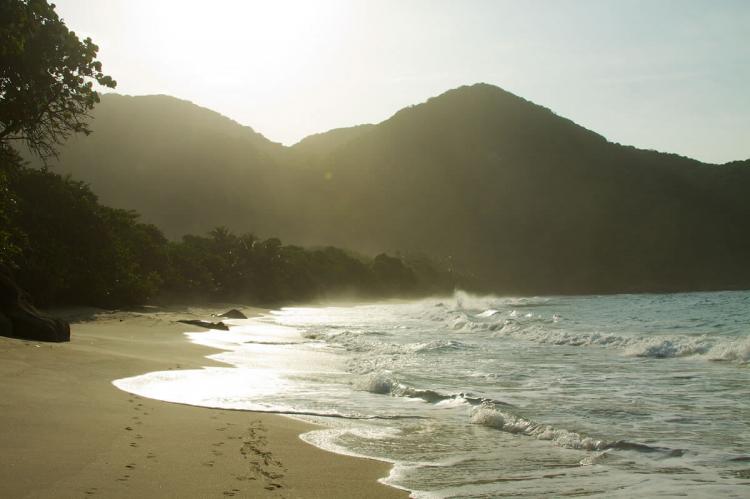Sierra Nevada de Santa Marta National Natural Park and Biosphere Reserve: A Natural and Cultural Treasure
The Sierra Nevada de Santa Marta National Natural Park is a biodiverse protected area on the northern coast of Colombia. It boasts diverse ecosystems, from beaches to mountains. The park is complemented by the Sierra Nevada de Santa Marta Biosphere Reserve.
Sierra Nevada de Santa Marta National Natural Park and Biosphere Reserve
A Natural and Cultural Treasure
Nestled along the northern coast of Colombia, the Sierra Nevada de Santa Marta National Natural Park stands as a testament to the country's rich biodiversity and cultural heritage. Colombia's second oldest national park encompasses diverse ecosystems, from pristine beaches to snow-capped mountain peaks. Complementing this protected area is the Sierra Nevada de Santa Marta Biosphere Reserve, a vast expanse of natural wonder that overlooks the Caribbean coast.
Sierra Nevada de Santa Marta National Natural Park
The Sierra Nevada de Santa Marta National Natural Park on the Caribbean Coast in northern Colombia is a testament to the country's rich biodiversity and cultural heritage. It is Colombia's second-oldest national park. Established in 1964, it covers an area of 3,830 square kilometers (1,480 square miles). The park is part of the Sierra Nevada de Santa Marta, the world's most elevated coastal mountain formation, with two peaks at 5,775 meters (18,946 feet) in height, the Cristobal Colon Peak and the Simon Bolivar Peak.
Sierra Nevada de Santa Marta Biosphere Reserve
The Sierra Nevada de Santa Marta Biosphere Reserve overlooks the Caribbean coast of northern Colombia. Most of the Biosphere Reserve (675,000 ha or 1,668,000 acres) lies in the Sierra Nevada de Santa Marta National Natural Park, and the remaining 56,250 ha (139,000 acres) comprises Tayrona National Natural Park. This vast expanse of natural wonder is home to around 30,000 members of the Kogi, Arhuaco, Kankuamo, and Wiwa indigenous communities. The reserve is also the site of the Teyuna Archaeological Park, known as the 'Ciudad Perdida' ('Lost City' in English), and is considered the world's tallest coastal mountain system.
Ecosystem Diversity
The Sierra Nevada de Santa Marta is a testament to nature's ingenuity, boasting a remarkable diversity of ecosystems shaped by its unique geographical and climatic conditions as an isolated mountain range distinct from the Colombian Andes, the Sierra Nevada has evolved into a mosaic of ecoregions, each with its distinctive characteristics and inhabitants.
Coastal Scrublands: Near the coast, where the Sierra Nevada meets the Caribbean Sea, the landscape transforms into the Guajira-Barranquilla xeric scrub ecoregion. Here, the arid climate and sandy soils give rise to sparse vegetation adapted to survive harsh coastal conditions. Despite the challenges, this region teems with life, with a variety of specialized plants and animals carving out niches in this rugged terrain.
Transitioning Forests: As one ascends the slopes of the Sierra Nevada, the scenery shifts dramatically, transitioning to the Sinú Valley dry forests. Cloaking the lower reaches of the range, these forests are characterized by their lush foliage and diverse plant life. Here, towering trees and dense undergrowth provide habitat for many species, from colorful birds to elusive mammals, all adapted to thrive in the cool, moist microclimate of the mountainside.
Montane Marvels: Above 500 meters (1,600 feet), the Santa Marta montane forests emerge, enveloping the landscape in a verdant blanket of green. Here, amidst the mist-shrouded peaks, a wealth of endemic species find refuge, their survival intricately linked to the cool, temperate conditions of the montane ecosystem. Towering trees, festooned with epiphytic plants, vie for sunlight while cascading streams and waterfalls nourish the lush undergrowth below.
High-altitude Haven: Ascending further into the sky, the landscape gives way to the Santa Marta Páramo, a realm of extremes where montane grasslands and shrublands mingle with marshes and acid bogs. This high-altitude sanctuary, reaching heights of up to 5,000 meters (16,000 feet), is home to a myriad of specialized species adapted to the harsh conditions of the páramo. Here, rare orchids bloom amidst the tussock grasses while Andean condors soar overhead, symbolic of this pristine wilderness.
Cultural Heritage
The Sierra Nevada de Santa Marta is not merely a landscape of natural beauty but a living testament to Colombia's rich cultural diversity. Inhabited for centuries by indigenous communities such as the Arhuaco, Kogui, and Wiwa, this region is steeped in spiritual significance and ancestral wisdom.
Sacred Landscape: For the indigenous peoples of the Sierra Nevada, the mountains are more than just geographical features; they are sacred entities imbued with cultural meaning and spiritual significance. The rhythms of life here are dictated by age-old traditions and ceremonies that honor the land and its inhabitants. Every peak, every river, every tree holds a story, a connection to the past that guides the present and shapes the future.
Legacy of Civilization: Evidence of human presence in the Sierra Nevada dates back millennia, with archaeological sites like Ciudad Perdida offering glimpses into the advanced civilizations that once thrived in these mountains. From terraced settlements to intricate stone carvings, these ancient peoples left a legacy of architectural marvels and cultural artifacts that speak to their ingenuity and creativity.
Preserving Culture: Today, efforts are underway to protect and promote indigenous culture and traditional conservation practices in the Sierra Nevada. Indigenous communities are guardians of their ancestral lands, employing age-old techniques to steward the environment and maintain ecological balance. Through initiatives like cultural revitalization programs and sustainable tourism ventures, these communities ensure that future generations inherit a landscape rich in natural and cultural heritage.
Challenges and Conservation Efforts
Despite its protected status, the Sierra Nevada de Santa Marta faces numerous threats, including deforestation, agricultural encroachment, and unsustainable tourism practices. The delicate balance between conservation and development requires careful management and stakeholder collaboration. Initiatives such as agroecology programs, fish farming, and environmental health projects aim to promote sustainable development while safeguarding the park's ecological integrity. With their deep-rooted connection to the land, Indigenous communities play a vital role in these efforts, advocating for preserving their ancestral territories and promoting traditional conservation practices.
Conclusion
In conclusion, the Sierra Nevada de Santa Marta National Natural Park and Biosphere Reserve symbolize Colombia's natural and cultural wealth. From its rugged coastline to its snow-capped summits, this diverse landscape holds a montage of life and history unrivaled in its beauty and significance.
As stewards of this precious heritage, we protect and preserve the Sierra Nevada for future generations, ensuring its ecological and cultural legacy endures for centuries. We can ensure that the Sierra Nevada de Santa Marta remains a beacon of biodiversity and cultural richness in Colombia and beyond through collaboration, conservation, and respect for indigenous knowledge.
